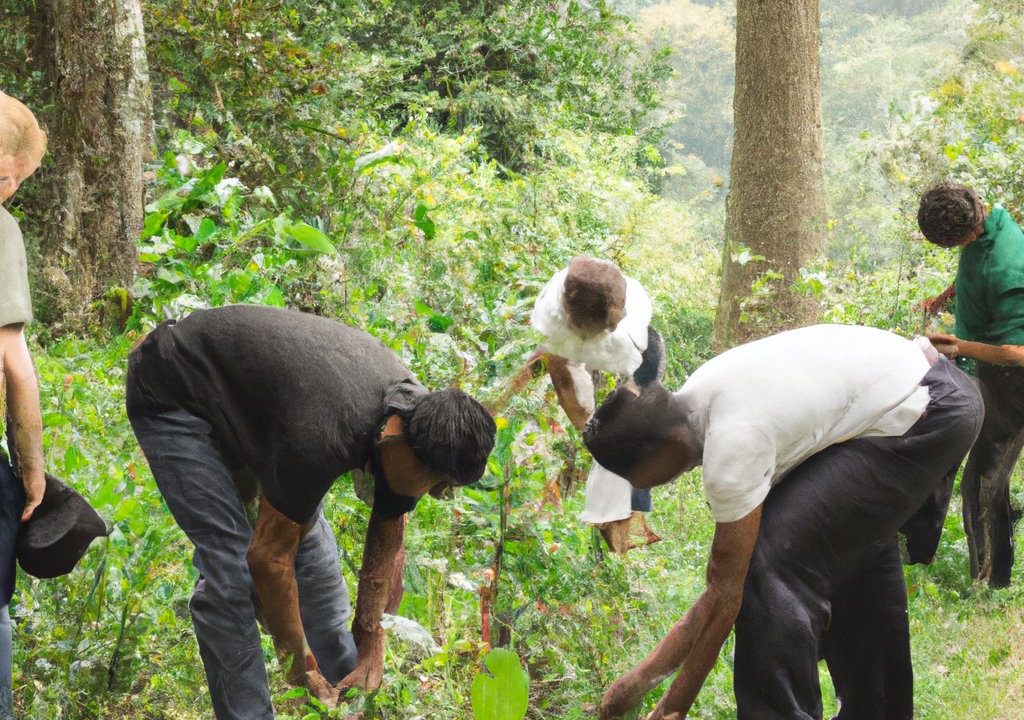
As global awareness of environmental and social challenges deepens, more travelers are seeking ways to ensure their journeys have a positive impact. Sustainable travel, which aims to reduce harm, has become mainstream—but a new movement is gaining momentum: regenerative travel. This approach doesn’t just reduce footprints; it actively restores ecosystems, revitalizes local cultures, and reinforces economic resilience in host communities. Imagine planting mangroves that protect coastlines from erosion, diving to nurse coral reefs back to life, or collaborating with indigenous guides to revive traditional arts. Regenerative travel transforms ordinary vacations into meaningful experiences that leave destinations healthier and stronger than before. In this comprehensive guide, we’ll explore what regenerative travel entails, dive into its core principles, outline actionable steps to plan your own regenerative adventure, highlight inspiring case studies, and share resources to help you measure your impact. Whether you’re an eco-conscious explorer seeking deeper connections or a seasoned volunteer traveler looking to elevate your efforts, this guide will equip you with the knowledge and inspiration to become a true agent of change on your next trip.
What Is Regenerative Travel?
Regenerative travel expands on the ideas of sustainable and responsible tourism by shifting the focus from “do no harm” to “actively heal.” While sustainability aims to maintain current environmental and social conditions, regeneration embraces the idea that communities and ecosystems are dynamic living systems capable of growth and renewal. Grounded in principles from regenerative agriculture, this travel philosophy posits that visitors can play a vital role in rebuilding degraded habitats, enhancing biodiversity, and supporting community-led initiatives. Rather than extractive tourism models, regenerative travel fosters a reciprocal relationship between guests and hosts: travelers contribute skills, labor, or funding in exchange for authentic cultural immersion and unique educational experiences. The end goal is a lasting legacy where ecosystems thrive, traditions endure, and local economies grow more resilient.
Key Principles of Regenerative Travel
- Environmental Restoration: Work alongside scientists and conservationists to rehabilitate natural areas—replanting forests, restoring wetlands, and reviving marine ecosystems.
- Community-Centric Development: Prioritize projects designed and managed by local stakeholders, ensuring that tourism revenues directly benefit residents.
- Cultural Integrity: Engage in respectful cultural exchanges that value traditional knowledge, languages, and rituals, empowering communities to safeguard their heritage.
- Economic Circulation: Support local supply chains by choosing locally owned accommodations, eateries, and craftspeople to maximize money reinvested in the destination.
- Adaptive Collaboration: Adopt a mindset of learning, feedback, and flexibility—working in partnership with NGOs, researchers, and community leaders to adapt strategies based on real-time outcomes.
Benefits of Regenerative Travel
Embracing regenerative travel yields benefits that extend far beyond the duration of a single trip. Ecologically, restoration projects enhance ecosystem services such as carbon sequestration, water purification, and flood protection, making destinations more resilient to climate change. Economically, community-driven initiatives diversify income sources, reduce dependency on mass tourism, and stimulate small-business growth. Socially, participatory projects foster cross-cultural understanding, build local capacity, and instill community pride. For travelers, regeneration offers deeply immersive experiences—hands-on activities, meaningful connections with hosts, and the satisfaction of witnessing tangible positive change. In essence, regenerative travel transforms tourism into a force for renewal, benefiting people, places, and the planet.
How to Plan Your Regenerative Journey
Planning a regenerative trip involves intentional research, thoughtful choices, and an openness to collaboration. Follow these steps to base your adventure on lasting impact:
- Research Destination Needs (approx. 70 words): Start by identifying places where ecological restoration or community development is most needed. Consult conservation organizations, government agencies, and local nonprofits to understand priority areas—whether reforesting watersheds, protecting endangered species, or reviving cultural traditions. Reviewing annual sustainability reports or ecotourism certifications can also reveal projects actively seeking volunteer support.
- Select Regenerative Tour Operators (approx. 70 words): Not all eco-labels are created equal. Seek operators that adhere to regenerative frameworks, such as the Global Regenerative Travel Council or certified B Corporations with a clear emphasis on community impact. Check transparent reporting on visitor contributions, project outcomes, and financial flows back to host communities. Authentic regenerative companies often integrate local leadership into decision-making processes.
- Engage in Hands-On Conservation (approx. 70 words): Opt for activities that allow you to contribute directly—tree planting, invasive species removal, coral nursery diving, or wildlife surveys. These opportunities not only repair ecosystems but also provide educational insights into local ecology. Be prepared for physical labor, and inquire about pre-trip training to maximize your effectiveness on the ground.
- Invest in Local Supply Chains (approx. 70 words): Maximize your economic impact by staying in locally owned guesthouses, dining at family-run restaurants, and purchasing crafts directly from artisans. This approach ensures tourism dollars circulate within the community, funding education, healthcare, and infrastructure. Moreover, knowing your expenditures support local livelihoods enhances the personal value of every purchase.
- Minimize Environmental Footprint (approx. 70 words): Even while contributing, travelers must practice low-impact habits—pack reusable items, avoid single-use plastics, and reduce energy consumption. Factor carbon offsetting into your budget using reputable platforms that fund renewable energy, forest conservation, or community-based climate resilience projects.
- Share Your Story Responsibly (approx. 70 words): Document your experiences through photography, blogging, or social media, but avoid sensationalizing local poverty or exploiting vulnerable communities. Center your narrative on partnerships and progress, crediting local leaders and organizations. This ethical storytelling can inspire others and build global awareness of regenerative tourism models.
Real-World Examples of Regenerative Travel
Coral Nursery Restoration in Belize
Ambergris Caye has become a hub for regenerative marine tourism, where visitors participate in coral nursery programs run by marine biologists. Diving teams carefully collect resilient coral fragments, cultivate them in underwater nurseries, and outplant them onto degraded reef sites. These efforts not only rebuild habitat for fish and invertebrates but also enhance coastal protection for nearby communities.
Agroforestry and Permaculture in Costa Rica
In the Central Valley region, regenerative travel programs partner with smallholder farmers to implement agroforestry methods that integrate trees with coffee and cacao plantations. Travelers help plant native shade species that improve soil fertility, reduce erosion, and create wildlife corridors. Guests also learn hands-on permaculture design techniques, connecting sustainable agriculture practices with local livelihoods.
Indigenous Cultural Revitalization in Canada
Along the Pacific Northwest coast, regenerative tourism initiatives collaborate with First Nations communities to restore salmon habitats and revive traditional canoe carving. Travelers join elders in harvesting sustainable timber, carving cedar canoes, and participating in cultural ceremonies. Proceeds from these experiences fund educational scholarships and language preservation programs.
Tools and Resources for Regenerative Travel
- Global Regenerative Travel Council: A coalition that sets standards, offers certification, and connects travelers with vetted experiences worldwide.
- Volunteering for Conservation: Platforms such as Conservation Volunteers International and Workaway match travelers with community-led environmental projects.
- Eco-Certification Bodies: Look for Green Globe, EarthCheck, and B Corp listings that highlight regenerative criteria.
- Community Tourism Networks: Fairbnb.coop and Responsible Travel curate tours that guarantee at least 50% of profits go back to local social or environmental projects.
Measuring and Amplifying Your Impact
To ensure your efforts yield measurable results, develop a simple impact-tracking system:
- Quantitative Metrics: Record the number of native trees planted, square meters of habitat restored, or volunteer hours completed.
- Financial Tracking: Keep receipts and logs of money spent on local services and donations to nonprofits.
- Community Feedback: Solicit testimonials from local project managers or beneficiaries to gauge social impact.
- Environmental Indicators: Partner with local researchers to monitor biodiversity surveys, water quality tests, or wildlife counts over time.
- Storytelling and Education: Share case studies and lessons learned with your home network or professional community to multiply awareness and support.
Conclusion
Regenerative travel represents a transformative shift in how we explore our planet—elevating tourism from passive visitation to active partnership in restoration and community empowerment. By embracing the principles and practices outlined in this guide—restoration, community-centric development, cultural integrity, economic circulation, and adaptive collaboration—you can craft journeys that leave a meaningful, lasting legacy. Whether you’re snorkeling to rebuild reefs in Belize, planting agroforestry systems in Costa Rica, or honoring indigenous traditions in Canada, every action contributes to a healthier, more equitable world. Start planning your regenerative travel itinerary today, and discover the profound rewards of being a catalyst for positive change.

















No Comments